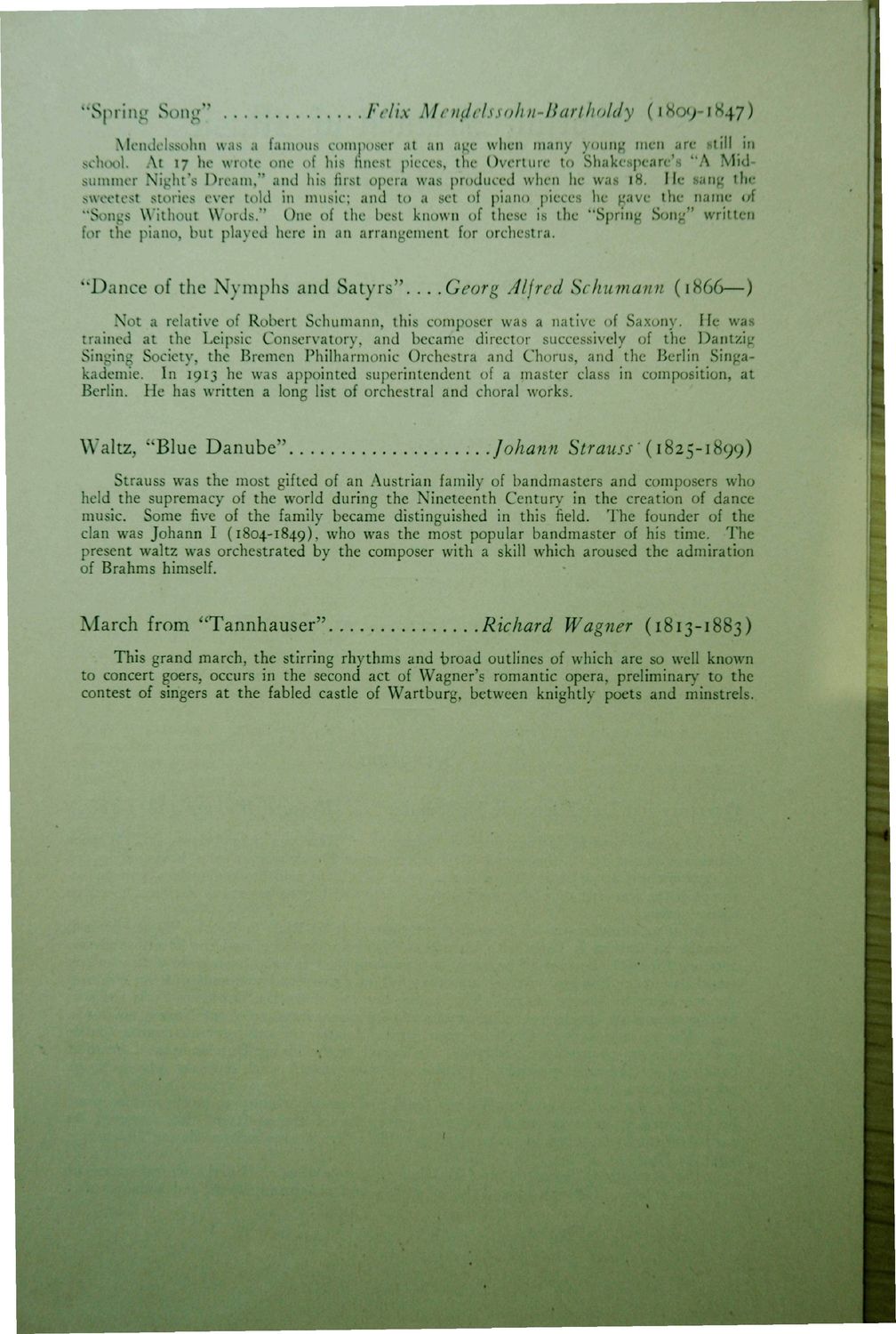Caption: Dedication - Smith Music Hall
This is a reduced-resolution page image for fast online browsing.

EXTRACTED TEXT FROM PAGE:
"Spring Song" Felix Mentfclssohn-Bartholdy (1809-1847) Mendelssohn was a famous composer at an age when many young men arc still in school. At 17 he wrote one of his nnest pieces, the Overture to Shakespeare's "A Midsummer Night's Dream," and his first opera was produced when he was 18. lie sang the sweetest stories ever told in music; and to a set of piano pieces he gave the name 01 "Songs Without Words." One of the best known of these is the "Spring Song" written for the piano, but played here in an arrangement for orchestra. "Dance of the Nymphs and Satyrs"....Georg Alfred Schumann (1866—) Not a relative of Robert Schumann, this composer was a native of Saxony. He was trained at the Leipsic Conservatory, and became director successively of the Dantzig Singing Society, the Bremen Philharmonic Orchestra and Chorus, and the Berlin Singakademie. In 1913 he was appointed superintendent of a master class in composition, at Berlin. He has written a long list of orchestral and choral works. Waltz, "Blue Danube" Johann Strauss' (1825-1899) Strauss was the most gifted of an Austrian family of bandmasters and composers who held the supremacy of the world during the Nineteenth Century in the creation of dance music. Some five of the family became distinguished in this field. The founder of the clan was Johann I (1804-184.9), who was the most popular bandmaster of his time. The present waltz was orchestrated by the composer with a skill which aroused the admiration of Brahms himself. March from "Tannhauser" Richard Wagner (1813-1883) This grand march, the stirring rhythms and broad outlines of which are so well known to concert goers, occurs in the second act of Wagner's romantic opera, preliminary to the contest of singers at the fabled castle of Wartburg, between knightly poets and minstrels.
|